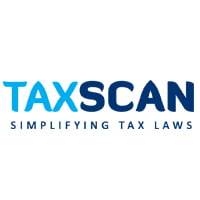Assessees restricted from availing credit in absence mechanism: Madras HC permits assessee to resubmit corrected annexures to Form GSTR-3B [Read Order]
![Assessees restricted from availing credit in absence mechanism: Madras HC permits assessee to resubmit corrected annexures to Form GSTR-3B [Read Order] Assessees restricted from availing credit in absence mechanism: Madras HC permits assessee to resubmit corrected annexures to Form GSTR-3B [Read Order]](https://www.taxscan.in/wp-content/uploads/2020/11/Assessees-availing-credit-Madras-High-Court-assessee-corrected-annexures-Form-GSTR-3B-Taxscan.jpg)
The Madras High Court while permitting assessee to resubmit corrected annexures to Form GSTR-3B held that in absence of an enabling mechanism the assessees should not be prejudiced from availing credit that they are entitled to.
The Petitioner, M/s Sun Dye Chem filed the monthly return for the period August 2017 to December 2017 in the GST portal in Form GSTR-3B. The returns were accompanied by annexures in Form GSTR-1 that reflected CGST, SGST and IGST.
There was however, an inadvertent error in reporting in Form GSTR-1 in regard to the outward supplies and as a result, Intra-state sales had been erroneously reported as inter-state sales. This resulted in the CGST and SGST credit being reflected in the IGST column at customer end. This was brought to the notice of Petitioner by customers as they had difficulty in availing credits.
The petitioner submitted a request for amendment of Form GSTR-1 that came to be rejected on August 12, 2019 on the ground that there was no provision to grant the amendment sought, in any event, not after March 31, 2019 as Notification 71/2018 had extended the time for submission of the amended GSTR-1 till March 31, 2019, for the period 2017-18. The petitioner was thus unable to correct the error.
The respondents in their common counter, refer to Sections 37, 38 and 39 relating to the furnishing of details of outward and inward supply and filing of returns, as well as the procedure to be followed in this regard.
It was argued that the time for amendment of the details of outward supply stood extended only till March 31, 2019. The petitioner, however approached the Officer only on August 16, 2019 seeking rectification of the errors occasioned during the period between October and December 2017.
The officer was thus handicapped and could not grant the relief as sought for in the absence of an enabling provision. Furthermore, any move to amend the timelines stipulated under statute could only be done by the Government as per Section 164 of the Act, upon recommendation of the GST Council.
The single judge bench of Justice Anitha Sumanth noted that the Forms by filing of which the petitioner might have noticed the error and sought amendment, in relation GSTR-2A and GSTR-1A were yet to be notified for the period. Had the requisite Forms been notified, the mismatch between the details of credit in the petitioner’s and the supplier’s returns might well have been noticed and appropriate and timely action taken.
However, the error was noticed only later when the petitioners’ customers brought the same to the attention of the petitioner.
“In the absence of an enabling mechanism, the assessees should not be prejudiced from availing credit that they are otherwise legitimately entitled to. The error committed by the petitioner is an inadvertent human error and the petitioner should be in a position to rectify the same, particularly in the absence of an effective, enabling mechanism under statute,” the court said.
Therefore the court permitted the petitioner to re-submit the annexures to Form GSTR-3B with the correct distribution of credit between IGST, SGST and CGST within a period of 4 weeks from date of uploading of this order and the respondents shall take the same on file and enable the auto-population of the correct details in the GST portal.


